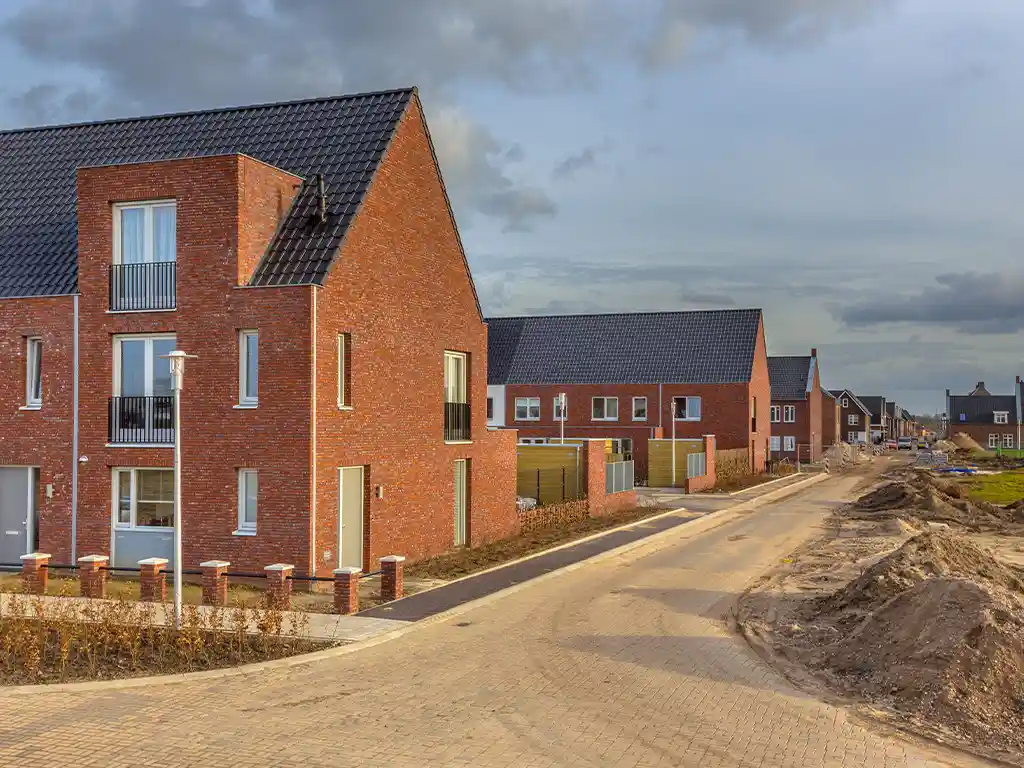In the world of construction, achieving efficiency is often easier said than done. At present, about 70% of construction projects end up over budget and are delivered late. This highlights a clear need for improved strategies and practices. Additionally, less than a quarter of construction firms have been able to match the productivity growth seen in overall economies over the past decade. With these challenges in mind, let’s delve into practical strategies for boosting construction efficiency.
Implementing Effective Planning and Scheduling Techniques
Effective planning and scheduling can significantly improve construction projects. One proven method is the Last Planner System® (LPS®), which was developed by Gregory Howell and Glenn Ballard. This system focuses on improving communication and commitment within teams, helping to avoid common pitfalls in construction timelines. By incorporating techniques like LPS®, construction firms can create more reliable schedules and better align their resources.
Additionally, breaking down projects into smaller tasks with clear deadlines helps keep everything on track. This method allows for better monitoring of progress and quicker identification of any issues that might arise. When everyone knows their role and deadlines, it becomes easier to manage workloads and avoid bottlenecks.
Using digital tools for scheduling and project management can also make a huge difference. These tools provide real-time updates and help teams stay informed about project status. They also make it easier to adjust plans as needed, ensuring that projects remain on schedule. By integrating these planning and scheduling techniques, companies can achieve higher levels of construction efficiency and project success.
Embracing Modern Construction Technologies and Tools
The rapid advancement of technology has revolutionised the construction industry, bringing tools that can significantly enhance productivity. For instance, the coronavirus pandemic accelerated the development of digital Lean approaches, pushing companies towards more connected methodologies. Those implementing these connected construction strategies have seen productivity increases of up to 30%.
Utilising Building Information Modelling (BIM) enables more accurate planning, designing, and managing of construction projects. Drones are another great example, as they allow for precise site surveys and real-time monitoring, reducing the need for manual inspections. Similarly, augmented reality (AR) can be used to visualise projects and identify potential issues before construction even begins.
Digital tools for scheduling and project management provide real-time updates and help teams stay informed about project status. They also make it easier to adjust plans as needed, ensuring that projects remain on schedule. Embracing these technologies not only boosts efficiency but also provides a competitive edge in the industry, setting companies apart in a rapidly evolving market.
Adopting Sustainable Building Practices and Materials
Embracing sustainability in construction isn’t just good for the planet; it’s also good for business. More and more, clients are looking for eco-friendly options, and meeting this demand can set your company apart. Start by integrating recycled and locally sourced materials into your projects. This reduces transportation costs and carbon footprint while supporting local economies. Energy-efficient designs, like improved insulation and renewable energy systems, can drastically cut long-term costs and boost your project’s appeal.
Waste reduction is another key area; using prefabricated components can minimise material waste and speed up the building process. Also, consider the lifecycle of the materials you use. Opt for those that have a longer lifespan and require less maintenance. Simple changes like using low-VOC paints and finishes can also make a big difference in creating healthier living and working spaces. These strategies not only contribute to a more sustainable environment but also enhance your reputation and bottom line.
Training and Educating the Workforce on Best Practices
To keep construction projects running smoothly, it’s essential to invest in your workforce. Regular training sessions help workers stay up-to-date with the latest techniques and safety protocols, which can prevent costly mistakes and accidents. Workshops and hands-on training are great for teaching practical skills that can be directly applied on-site. Additionally, consider bringing in experts for specialised training in areas like sustainable building practices or new technologies. This not only boosts your team’s skillset but also keeps them engaged and motivated.
On-the-job training and mentoring can be highly effective for skill development. Pairing less experienced workers with seasoned professionals ensures knowledge is passed down efficiently. Furthermore, make use of digital learning platforms that offer flexible training options, allowing workers to learn at their own pace. Regularly updating training materials and incorporating feedback from your team can help ensure the training remains relevant and impactful. By prioritising education and training, you’re setting your workforce up for success, ultimately leading to better project outcomes.
Utilising Efficient Waste Management Systems
Waste management might not be the most glamorous part of construction, but it’s crucial for keeping costs down and the site tidy. Start by setting up clear waste segregation stations on-site, so materials like wood, metal, and plastics are separated right from the get-go. This makes recycling much easier and more efficient. Another useful approach is on-site recycling; rather than hauling waste off to landfill, recycle what you can on the spot. For example, crushed concrete can be reused as aggregate for new foundations. Efficient material usage is also key—order just what you need and keep a close eye on inventory to avoid overstocking. And don’t forget to train your team on best practices for waste management. When everyone knows how to properly dispose of materials, the whole process runs more smoothly. Partner with waste management companies that offer recycling services and can provide you with regular reports on your waste output and recycling rates. These insights can help you tweak your processes and find new ways to reduce waste further.
Collaborating with Suppliers and Subcontractors for Better Resource Management
Building strong relationships with suppliers and subcontractors is a key element in managing resources effectively. Clear communication and mutual trust ensure materials arrive on time and subcontracted tasks are completed as scheduled. Regular meetings and check-ins can help address any issues early on, preventing delays and cost overruns.
Consider establishing long-term partnerships with suppliers who understand your needs and can offer competitive rates. These relationships often come with perks like priority delivery and better payment terms, which can be invaluable when deadlines are tight. Subcontractors, too, benefit from understanding the specific requirements and expectations of your projects. When everyone is on the same page, it’s easier to coordinate efforts and keep things running smoothly.
Additionally, using integrated project management tools can enhance collaboration by providing a shared platform for tracking progress and updates. This transparency helps avoid misunderstandings and keeps all parties accountable. Encouraging an open dialogue about challenges and potential improvements can also foster a collaborative atmosphere, leading to better resource management and more successful projects overall.
Monitoring and Evaluating Project Performance Regularly
Regular monitoring and evaluation of project performance are essential for maintaining efficiency. Construction sites generate a massive amount of data daily, and effectively managing this data can pinpoint inefficiencies and guide improvements. The construction industry faces the massive challenge of systematically collecting and analysing the vast amounts of data generated daily on projects worldwide.
Utilising robust data analysis systems can help in tracking progress and identifying areas that need attention. Implement real-time monitoring tools to keep an eye on key performance indicators (KPIs) such as time management, resource allocation, and budget adherence. This allows for swift corrective actions if something goes awry.
It’s also useful to conduct regular site inspections and progress meetings to get a firsthand look at the project’s status. Engage your team in these evaluations to gather their insights and address any concerns they might have. Transparency in communication ensures everyone is aware of the project’s goals and current standing, which in turn fosters accountability and collaborative problem-solving.
Invest in training your staff to use these data tools effectively, so they can provide accurate reports and meaningful analysis. Regularly reviewing and updating your evaluation processes will help you stay agile and responsive to any changes or challenges that arise.
Implementing Lean Construction Techniques to Minimise Waste
Lean construction techniques offer a pragmatic way to reduce waste and boost efficiency. One core principle is to identify and eliminate any activities that don’t add value to the project. For instance, streamlining workflows can significantly cut down on wasted time and materials. This approach fosters a culture of continuous improvement, where teams consistently seek out ways to enhance processes.
Moreover, adopting Lean tools like Just-In-Time delivery ensures that materials arrive exactly when needed, minimising storage costs and reducing the risk of damage or loss. Visual management techniques, such as Kanban boards, help keep everyone on the same page, clearly displaying project progress and task assignments.
Engaging the workforce in Lean practices is also crucial. Encourage team members to contribute their ideas for improvements and provide them with the necessary training to implement Lean methods effectively.
The benefits of Lean construction are well-documented. Implementing these techniques can lead to substantial improvements across numerous benchmarks.
By focusing on these strategies, construction firms can not only minimise waste but also enhance overall project outcomes, making them more competitive in the marketplace.

